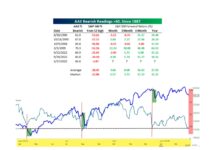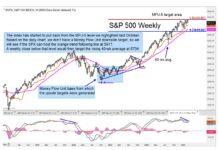 By Greg Naylor
By Greg Naylor
November was an eventful month, as the U.S. elections upheld the status quo in the House, the Senate, and the Presidency. Markets initially dipped, then recovered. Looking ahead into December, attention has turned to negotiations over the so-called “fiscal cliff.” Here is a re-cap of November by the numbers:
Stocks & Bonds
After a negative October, U.S. stocks recovered somewhat. Interestingly, foreign stocks continue to post relatively strong gains on the heels of a strengthening euro. Inflation for the year is unsurprising at just over 2%.
| S&P 500 Total Return | MSCI EAFE | BarclaysAggregateBond | Unadjusted CPI | |
| November | 0.58% | 2.20% | 0.16% | -.04% |
| October | -1.85% | 0.76% | 0.20% | .44% |
| YTD | 14.95% | 9.37% | 4.36% | 2.24% |
Commodities & Currencies
NYMEX crude gained 3.1% in November to close at $88.91 per barrel. Commodities had mixed results. Gold, corn, soybeans and wheat fell slightly. Meanwhile, silver, platinum, cotton and pork posted small gains
The dollar index in November rose 0.29%. For the year it is slightly positive.
Economy
Economic indicators continued to offer mixed signs of recovery and recession. After a few good months, in November the Institute for Supply Management reported that the manufacturing PMI was 49.5, down from 51.7 in October. A reading below 50 indicates economic contraction.
In contrast, there was good news in the real estate market. The National Association of Realtors (NAR) reported that the annual rate of existing-home sales in October increased 10.9%. Median prices also rose 11.1%. The Fed policy of low interest rates has certainly played a part in the housing recovery, as mortgage rates are near historic lows.
Summary
Although the good news seems to slightly outweigh the bad news, the fledgling economic recovery in the U.S. continues to be threatened by both external challenges (Europe and China) and internal challenges (political gridlock). For the moment, attention has turned to the immediate internal challenge of the ‘fiscal cliff.’
Non-partisan studies show that, without a deal between Congress and President Obama, the U.S. economy will almost certainly return to recession for the next few quarters. In the short run, it is likely that the stock market will react negatively. However, in the medium and long-term, the ‘fiscal cliff’ actually saves the U.S. from reaching a debt level of critical mass where we can no longer even make interest payments without stoking inflation. The numbers: we currently are running an annual deficit of about $1.1 trillion. The ‘fiscal cliff,’ through tax increases on everyone, and spending cuts on everything except the entitlement programs, reduces our deficit from $1.1 trillion annually to $500 billion annually. Some economists have gone so far as to argue that the short-term negative shock of this change is more than worth the long-term benefit. From an opportunity cost standpoint, this frees up $600 billion per year of investment capital that can now be allocated to the more-efficient private sector.
I am neither bullish nor bearish on the ‘fiscal cliff,’ rather pragmatic. From an investment standpoint, as always, quality matters. If the economy shrinks by 2%, not all companies will be affected equally. Struggling companies with high debt loads or weak product demand could possibly be pushed into bankruptcy if we enter another recession. Quality companies will continue to see demand for their products, and will keep expenses in check.
Unemotional investing, as much as humanly possible, is often the most challenging and rewarding behavior.
This material was prepared by Greg Naylor, and does not necessarily represent the views of Woodbury Financial or its affiliates. This information should not be construed as investment, tax or legal advice and may not be relied upon for the purpose of avoiding any Federal tax liability. This is not a solicitation or recommendation to purchase or sell any investment or insurance product or service, and should not be relied upon as such. The S&P500, MSCI EAFE and Barclays Aggregate Bond Index are indexes. It is not possible to invest directly in an index.
Investing involves risks and investors may incur a profit or a loss. Past performance is not an indication of future results.
Data Sources:
www.standardandpoors.com – S&P 500 information
www.msci.com – MSCI EAFE information
www.barcap.com – Barclays Aggregate Bond information
www.cmegroup.com – NYMEX crude prices
www.bloomberg.com – U.S. Dollar & commodities performance
www.realtor.org – Housing market data
www.bea.gov – GDP numbers
www.bls.gov – CPI and unemployment numbers
www.commerce.gov – Consumer spending data
www.napm.org – PMI numbers
www.coinnews.net – Gold and silver price information
About Greg Naylor: Greg is a partner and co-founder of Fiat Wealth Management, an independent financial advisory firm in Long Lake, Minnesota. He has been investing for over 7 years and enjoys sports, reading, singing, and spending time with family. Greg is a 2004 graduate of the University of Minnesota and lives in South Minneapolis with his wife Kat. Click here for more articles by Greg.
Twitter: @seeitmarket Facebook: See It Market








